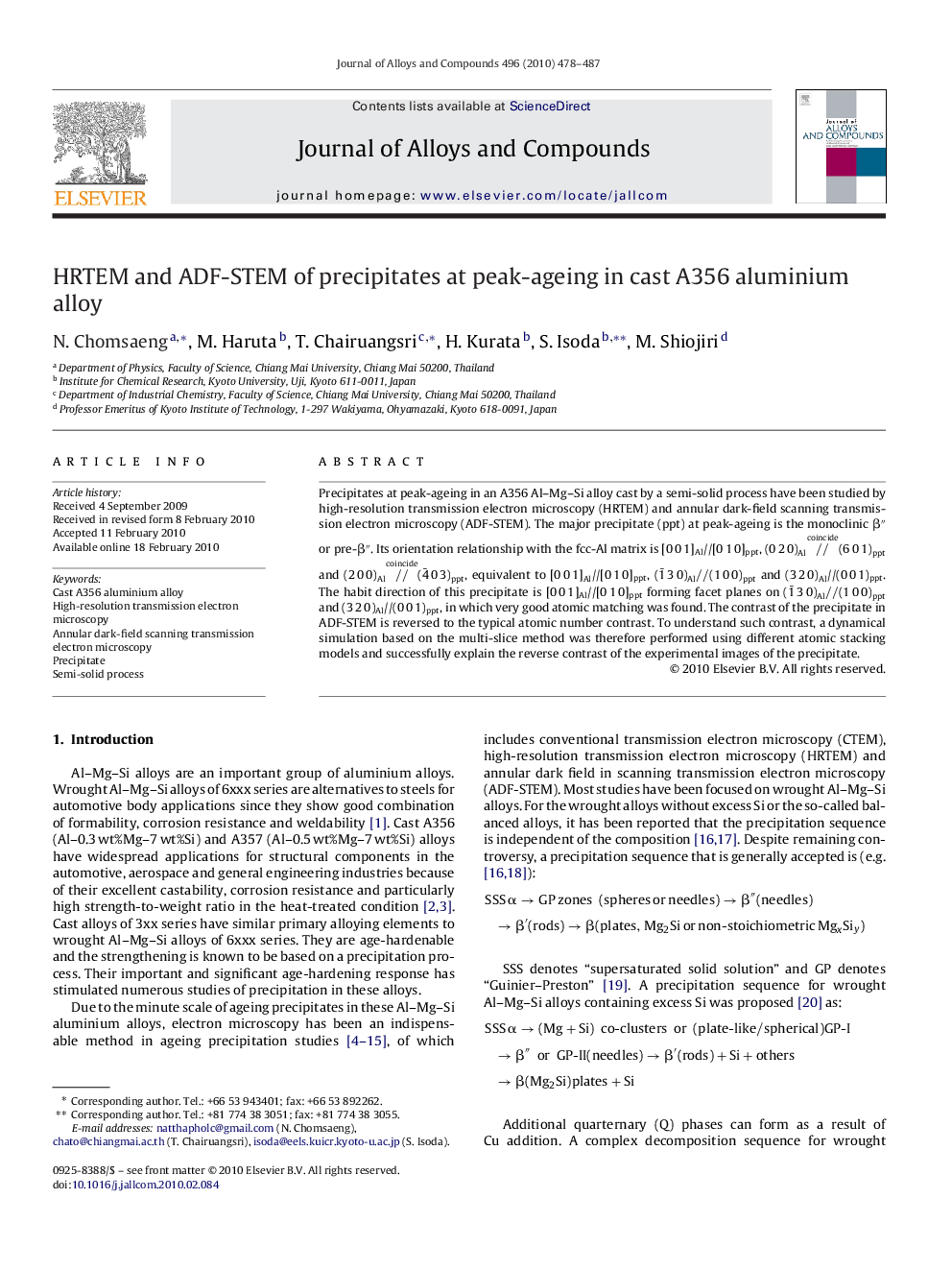| Article ID | Journal | Published Year | Pages | File Type |
|---|---|---|---|---|
| 1619132 | Journal of Alloys and Compounds | 2010 | 10 Pages |
Precipitates at peak-ageing in an A356 Al–Mg–Si alloy cast by a semi-solid process have been studied by high-resolution transmission electron microscopy (HRTEM) and annular dark-field scanning transmission electron microscopy (ADF-STEM). The major precipitate (ppt) at peak-ageing is the monoclinic β″ or pre-β″. Its orientation relationship with the fcc-Al matrix is [0 0 1]Al//[0 1 0]ppt, (0 2 0)Al//coincide(6 0 1)ppt and (2 0 0)Al//coincide(4¯ 0 3)ppt, equivalent to [0 0 1]Al//[0 1 0]ppt, (1¯ 3 0)Al//(1 0 0)ppt and (3 2 0)Al//(0 0 1)ppt. The habit direction of this precipitate is [0 0 1]Al//[0 1 0]ppt forming facet planes on (1¯ 3 0)Al//(1 0 0)ppt and (3 2 0)Al//(0 0 1)ppt, in which very good atomic matching was found. The contrast of the precipitate in ADF-STEM is reversed to the typical atomic number contrast. To understand such contrast, a dynamical simulation based on the multi-slice method was therefore performed using different atomic stacking models and successfully explain the reverse contrast of the experimental images of the precipitate.
